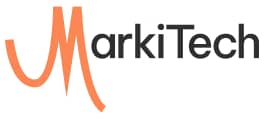Medically Reviewed by Dr. Hanif Chatur
Key Takeaways
- Comprehensive Digital Health Landscape: Digital health, encompassing EHRs, telehealth, wearable technologies, mHealth, HIT, personalized medicine, and AI, is revolutionizing healthcare by making it more efficient, personalized, and accessible.
- Strategies for Success in Digital Health: To excel in digital health, practitioners should focus on interoperability, invest in robust cybersecurity, foster collaboration, prioritize patient-centred care, stay updated with regulations, continuously learn and adapt to new technologies, and leverage data analytics for predictive insights.
- Future and Importance of Digital Adaptation: The future of digital health promises further integration of advanced technologies like blockchain, augmented reality, and nanotechnology. Healthcare professionals must stay informed and adaptable to provide the best care in this rapidly evolving digital landscape.
Click Here to Book a Meeting with us
As I was sitting here in the tv room (yep! Star Trek day today), struggling to come up with an opening sentence, my young friend walked in and commented on Geordi La Forge’s 25th century optical device: “technology is flying, man”! And he couldn’t have been more on the ball. In the last four decades, if not more, we have seen all knowledge get converted to zeros and ones, in fact with increasing rapidity in each decade. All information based activity is now digital. And it has already left its indelible impression on every aspect of our lives. While physical research and development in healthcare has changed its landscape beyond recognition, digital health has emerged as a game changing indicator of progress, marrying technology with healthcare to create products and services that are improving the lives of patients and the efficiency of providers. From wearables that monitor vital signs to artificial intelligence (AI) that predicts health trends and events, digital health is revolutionizing the medical field. The range and enormity of change merit a very comprehensive and sophisticated exploration of the various facets of digital health ; if you’re not doing it right, you’re going to get left behind in the race to the summit in the modern medical era. And so, we’re going to do you a favor today, and give you some really useful insights.
What is Digital Health?
Digital health is a catchall phrase that attempts to enigmatically describe the convergence of a range of digital technologies with health, healthcare, living, and society, with the purpose of making healthcare delivery more efficient and medicine more personalized and precise. The scope of digital health encompasses health information technology (HIT), wearable devices, telehealth and telemedicine, and personalized medicine.
Key Components of Digital Health
Electronic Health Records (EHRs): Back in the day, as the scene opened, the John Hamm look-alike doctor would saunter in and hold out his hand, and the Kate Beckinsale look-alike nurse would hand him a clipboard and he would flip through the various charts with the most serious expression John Hamm has ever mustered. Not anymore, Hamm sits in his office, the nurse is nowhere to be seen, and the charts pop up on his computer monitor. That’s EHRs right there, the digital version of patients’ paper charts and they’re real-time, patient-centered records. Much like nurse Beckinsale’s paper charts, they contain a patient’s medical history, diagnoses, medications, treatment plans, immunization dates, allergies, radiology images, and laboratory test results. All that’s missing is nurse Beckingsale pouting at Dr. Hamm. Not much of a series, if you ask me; but the technological advantage? It’s to die for.
Telehealth: So, what happens when you have three feet of snow and both Dr. Hamm and nurse Beckinsale can’t go for a patient visit. This is when the nurse brings him a cup of coffee (we’re PG, ok?) and they use their f digital information and communication technologies, such as computers and mobile devices, to access health care services remotely and manage the patient’s health care. Dr. Hamm can have a video consultation with the patient while nurse Beckinsale remotely monitors the patient’s vital signs and symptoms.
Wearable Technologies: Patients can be encouraged to wear smart devices such as fitness trackers, smartwatches, and sensors embedded in their clothing so nurse Beckinsale can monitor, store, and transmit health data to Dr. Hamm in real time. These devices help in tracking physical activity, heart rate, and sleep patterns and give our dynamic duo of Hamm’n’Beckinsale a clear insight into their patient’s health in real time.
Mobile Health (mHealth): Sitting in their cozy office back at the clinic (no log fires please; I don’t have the budget), our dynamic duo also leverage mobile devices and apps to deliver health services and information delivered or enhanced through. These mHealth applications can include appointment scheduling, health monitoring, wellness management, and healthcare education.
Health Information Technology (HIT): With Hamm and Beckingsale in the case, of course we’re on the way to giving you at least a couple of hit seasons. Except this HIT encompasses a broad range of technologies used to store, share, and analyze health information. HIT can improve healthcare quality, prevent medical errors, reduce healthcare costs, increase administrative efficiencies, decrease paperwork, and expand access to affordable care. (And bust the clinic’s budget for coffee).
Personalized Medicine: Digital Health can also include leveraging genetic or other bio-marker information to tailor treatment to the individual characteristics of each patient. A bit like the cliche small town doctor who knew each patient and their medical history personally, having officiated at the birth of most, and could prescribe and treat the patient according to specific needs. However, modern day personalized medicine relies much more heavily on data and analytics than on experience and relationships to understand each patient’s unique disease processes.
Artificial Intelligence & Machine Learning: AI and machine learning are making significant inroads into healthcare, with applications ranging from diagnostic algorithms and robotic-assisted surgery to personalized treatment and predictive analytics.
Strategies to Stay Ahead in Digital Health
1. Embrace Interoperability: Right. Change of cast. The Maintenance Guys walk in. Sure, they’re Australian. But they do (or should do) a decent job of ensuring that different digital health systems and devices continue to communicate and exchange data effectively so that Dr. Hamm and nurse Beckinsale are never left in the dark on the well-being of their patients. Interoperability is key to a unified healthcare system where patient data is easily accessible across various platforms and the behind-the-scenes support they provide to Digital Health is critical to its success.
2. Invest in Cybersecurity: An increase in digital health solutions brings with it the increased risk of cyberattacks. A good lock and key won’t do anymore; the thieves come in through the wiring. Therefore, it’s become critical to invest in robust cybersecurity measures to protect patient data and comply with regulations like HIPAA in the U.S. and GDPR in Europe.
3. Foster Collaboration: Dr. Hamm’s clinic should collaborate with technology providers, his peers in the healthcare professions, and also with patients to develop solutions that address real-world needs. Co-designing with stakeholders can lead to the development of digital health tools that are more user-friendly and carry a solid bang for the buck.
4. Focus on Patient-Centered Care: At the end of the day, the whole point of a Digital health solution is to enhance the patient experience, making healthcare more accessible, personalized, and patient-focused. Tools that engage patients and make them proactive participants in their own care can lead to better health outcomes and greater patient satisfaction.
5. Keep Abreast of Regulations: Stay informed about the changing regulatory landscape for digital health to ensure compliance and to anticipate how new regulations might affect your products and services.
6. Continuous Learning and Adaptation: The field of digital health is ever-changing. Healthcare researchers keep coming up with new treatment methodologies; technology developers keep delivering better and more sophisticated health tech.It therefore becomes incumbent on providers and organizations to commit to continuous learning and adapting new technologies and methodologies.
7. Leverage Data Analytics: The clipboard in Dr. Hamm’s hand only tells him about the past and the present. But data analytics can help him gain insights into patient health trends, improve his ability to project symptoms and conditions, and make informed decisions to provide perceptibly better care. Predictive analytics can be particularly powerful in preventing readmissions and managing chronic diseases.
The Future of Digital Health
The future of digital health is going to be about even more integration of technology in healthcare. Developers are already playing with prototypes of innovations such as blockchain for secure health records, augmented reality for medical training, and nanotechnology for more precise drug delivery systems. As digital health continues to grow, staying informed and adaptable will be crucial for healthcare professionals looking to provide the best possible care in the modern medical era.
Click Here to Book a Meeting with us
Conclusion
Digital health is not a futuristic concept — it’s here now, reshaping the healthcare landscape. By understanding and embracing the components of digital health, healthcare providers and patients can benefit from more informed, efficient, and personalized care. As we continue to navigate this digital revolution, staying ahead will require a commitment to innovation, collaboration, and above all, a focus on the well-being of the patient at the heart of healthcare.
MarkiTech has various subsidiaries with products and services targeted towards digital healthcare and telehealth/telemedicine and virtual clinic with laser focus on helping seniors age in place and help their caregivers.
Sensights.ai is a company focused on remote patient monitoring and aging solutions, which utilizes artificial intelligence to track the health of patients and keep a round-the-clock connection between caregivers and patients.
As well, Veyetals uses rPPG and AI modeling algorithms to capture the light reflected by the blood vessels under a patient’s skin to measure vitals anytime, anywhere.
Lastly, we are now launched our latest Mental Health AI Scribe tool called CliniScripts.com



